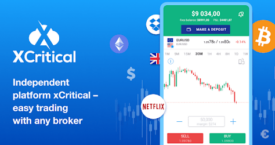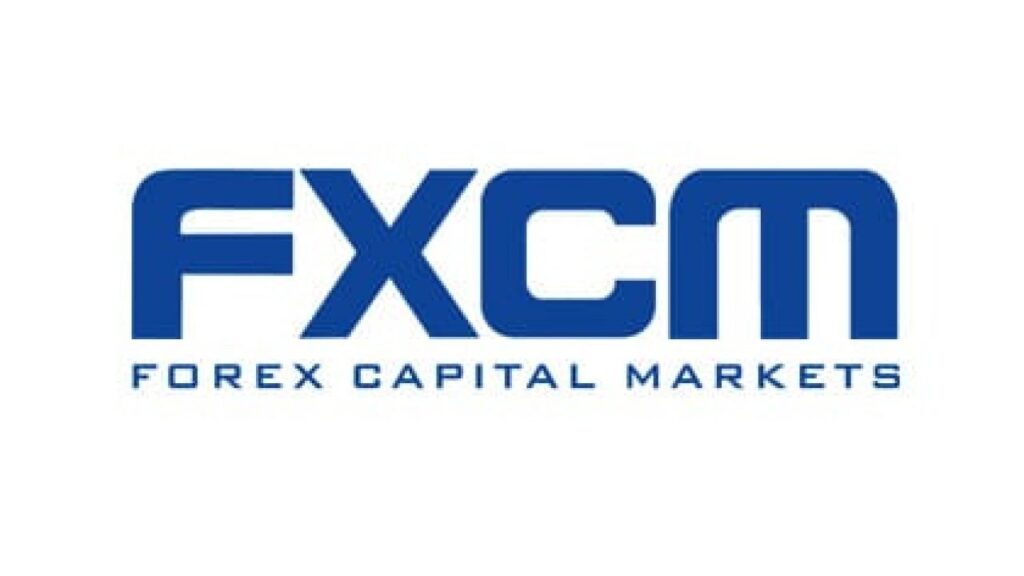American Options
2020年3月27日
Contents:

Put https://forexarena.net/Put Option is a financial instrument that gives the buyer the right to sell the option anytime before the date of contract expiration at a pre-specified price called strike price. It protects the underlying asset from any downfall of the underlying asset anticipated. Strike PriceExercise price or strike price refers to the price at which the underlying stock is purchased or sold by the persons trading in the options of calls & puts available in the derivative trading.


The American Call Option allows an investor to exercise the option at any time, up to the maturity date. This means the investor is left to decide the most favorable time that the option should be exercised. For instance, investor A purchased a call option on Company XYZ, if the expiration date is October 2019, the investor has the right to exercise the option at a date prior to October and in October. This right helps investors avoid their call option from being worthless or out-of-the-money. As we know, unlike a European option, the holder of an American option can exercise the option before the expiry date.
He can still exercise his option profitably on the expiration date – buying 100 shares at the $30 strike price and promptly selling them for $35 a share, but his profit is only $500. To determine his net profit, he must subtract the premium, the price he paid for the option, from his $500 gross profit. For example, an investor buys a European call option to buy 100 shares of Company ABC, with a strike price of $30 and an expiration date in April. However, unlike the holder of an American-style option, he does not have the freedom to exercise his option at that time – he can only exercise it upon expiration. An American Call option allows the holder of the option to ask for the delivery of the security or stock anytime between the execution date and the expiration date when the price of the assets shoots above the strike price.
American options on dividend-paying assets
https://trading-market.org/s give the owner the right to buy or sell the underlying asset , at a fixed price , on or before a specific expiration date in the future. A call option gives the owner the right to buy a stock, for example, while a put option gives the owner the right to sell the stock. American and European options have similar characteristics but the differences are important. For instance, owners of American-style options may exercise at any time before the option expires. An American-style option allows investors to capture profit as soon as the stock price moves favorably, and to take advantage of dividend announcements as well.
- However, the likelihood of exercise on each such node is lower, since St becomes increasingly less likely to cross the KM threshold.
- The key to this approach is the use of least squares to estimate the conditional expected payoff to the optionholder from continuation.
- American and European options have similar characteristics but the differences are important.
- Individual investors need to keep the type of option they’re buying and selling in mind.
- They give investors the choice, but no obligation, to either buy an asset at a predetermined strike price or sell an asset for a specified strike price.
So then we now organize the preceding results into a proposition which follows right away. ICE Clear Europe is able to provide margin offsets between the options and the underlying futures contract as well against options positions executed in other option styles. Option Premium / Daily MarginDue to futures style margining option premiums are not paid/received at the time of the transaction. Rather margins are paid /received every day according to the changing value of the option.
In this paper we have studied American equity options in a correlated stochastic interest rate framework of Vasicek type. We have introduced a tractable lattice-based discretization of the equity price and interest rate processes by means of a quadrinomial tree. Our quadrinomial tree matches the joint discretized moments of the equity price and the stochastic interest rate and converges in distribution to the continuous time original processes. Our results are in line with the existing literature when interest rates lie in the positive realm. In particular, for the American put options, the higher the dividend yield, the higher the benefits from deferring the option exercise.
Proof of Proposition 3
Now that you own the stock at a purchase price of $1,500 you can sell it back on the market for $1,580 and make an immediate gain of $80. A European option can be defined as a type of call option that can be redeemed only at its expiration or maturity date. A European option is usually traded at a discount as the holder of the same as a single opportunity for exercising it. European option vs American option in this article, the holder of such an option can even choose to sell the option and close his or her position if at all he or she is unwilling to wait for its maturity or expiration date. European options are mainly traded over the counter and are less likely to be found on the major stock exchanges.
On the other hand, an https://forexaggregator.com/ option can be defined as a type of call option that can be redeemed anytime during the period lying between the date of options trading and expiration or maturity date. Occasionally, it may be beneficial to exercise an option before it expires, to collect a dividend, for example, but it’s seldom important. Dividends are cash payments paid to shareholders by companies as a reward to investors.
Newsroom – AAdvantage Members Earn More Rewards, More Often … – American Airlines Newsroom
Newsroom – AAdvantage Members Earn More Rewards, More Often ….
Posted: Wed, 01 Mar 2023 15:02:05 GMT [source]
$30 is the option’s strike price, the price at which the option can be exercised. The value of the option will change, moving in sync with the underlying asset. An evergreen option is an option where the buyer has the right to exercise by providing a pre-determined period of notice. This option could be either American or European in nature or alternatively it could be combined with option styles that have non-vanilla exercise rights. Evergreen options provide sellers with a period of time to prepare for settlement once the buyer has exercised their rights under the option. Embedding evergreen optionality within on and off-balance sheet products can enable counterparties to lengthen their inflow or outflow obligations.
Canary option
The error due to artificial boundary conditions can be accurately estimated in the case of constant coefficients by using the previously obtained estimates for the corresponding put options and the put-call parity. This characterization of a barrier option as a standard option plus or minus a discount term is very useful from a financial engineering angle. In the next chapter, we will obtain some simple contractual equations for barriers, and the use of discounts will then be useful for obtaining Black–Scholes type formulas for other types of barriers. The option seller doesn’t need to worry about the option being exercised early.
We remark that our results cannot be obtained from standard symmetry results for American options (see Battauz et al. and the references therein) due to the stochasticity of our interest rates. In the standard Black-Scholes case, the American put-call symmetry swaps the constant interest rate with the constant dividend yield. Being our interest rate stochastic and our dividend yield constant, such symmetry result is not viable. We study the optimal exercise of American options under incomplete information about the drift of the underlying process, and we show that quite unexpected phenomena may occur. In fact, certain parameter values give rise to stopping regions very different from the standard case of complete information.
- Call OptionA call option is a financial contract that permits but does not obligate a buyer to purchase an underlying asset at a predetermined price within a specific period .
- It’s important to note that while traders of European options are limited in terms of when they can exercise options, they are still free to sell their options to another trader in the secondary market prior to the option’s expiration.
- The hedging martingales can be constructed from any price approximation to American option prices.
But before embarking on that we desire to note some properties of a good approximation for the put price that we can perhaps look out for from our results. In a summary, the transformation would then be defined as in the next proposition which is one of the major results of this work. Position ReportingAll positions are converted to futures equivalents by way of deltas and are aggregated with the futures position for daily position monitoring by the Exchange. The Exchange’s daily position management regime requires that all positions in any contract month must be reported to the Exchange on a daily basis. FINCAD’s implementation of HW’s model allows for a time-dependent exit rate.
American Call and Put Options
Within our framework, interest rates are not always positive and zero-coupon bonds may have initial prices larger than one. Thus, early exercise may be optimal under some circumstances as one can indeed see in the following first example. In Appendix 4 we also document the impact of the correlation on the American equity options’ prices. In this fairly general pricing framework, the price of European options on S can be derived in closed formulae by applying the change of numéraire as describedFootnote 9 in Geman et al. .
You asked: Can I get a refund if the airline changed my flight time? – The Washington Post
You asked: Can I get a refund if the airline changed my flight time?.
Posted: Thu, 02 Mar 2023 19:27:00 GMT [source]
The counterintuitive finding is that an American call is always worth more in the market than exercised, which means an American call option should never be exercised. European options, however, are easier to price theoretically and are able to be price using Analytical models. Also notice that the shape of the variation of the payoff for an American option is also reflected here in over time. So all conclusions made regarding the other previous two plots still hold under Figure 5. In this case represents the optimal times as represents the optimal value of the option at node i whose location is geometrically.
However, as risk theory suggests, higher rewards always come with highly risky investments. So in that case well as the American option carries a better payoff than the European, it also carries a higher risk which may scare away risk-averse investors as is always the case. However, for a dividend paying stock, the only time it may pay to exercise a call option is the day before the stock goes ex-dividend, and only if the dividend minus the cost of carry is less than the corresponding Put. By exercising, the option holder may forego the time value but will make up from the dividend received. We have used the word ‘may’ because the dividend may not be high enough to justify the early exercise. The holder of such an option gets to wait for the best price and then he or she can accordingly exercise or redeem the option between the date of option trading or date of purchase and maturity date.
American Equity Option IntroductionAn American option give an investor the right but not the obligation to buy a call or sell a put at a set strike price at any time prior to the contract’s expiry date. Since investors have the freedom to exercise their American options at any point during the life of the contract, they are more valuable than European equity options, which can only be exercised at maturity. An investor holding an American-style option and seeking optimal value prefer to sell it on, rather than exercise it before maturity under certain circumstances.

For example, we show that for the American put option it is sometimes optimal to exercise the option when the underlying process reaches an upper boundary. The settlement price is the official closing price for the expiration period, establishing which options are in the money and subject to auto-exercise. Any option that’s in the money by one cent or more on the expiration date is automatically exercised unless the option owner specifically requests their broker not to exercise. The settlement price for the underlying asset with American-style options is the regular closing price or the last trade before the market closes on the third Friday.
Owners who wish to realise the full value of their option will mostly prefer to sell it as late as possible, rather than exercise it immediately, which sacrifices the time value. In finance, the style or family of an option is the class into which the option falls, usually defined by the dates on which the option may be exercised. These options—as well as others where the payoff is calculated similarly—are referred to as “vanilla options”. Options where the payoff is calculated differently are categorized as “exotic options”. Options are contracts that derive their value from an underlying asset or investment.
A game option or Israeli option is an option where the writer has the opportunity to cancel the option she has offered, but must pay the payoff at that point plus a penalty fee. That is, there is no end to the period into which the owner can look back. A rainbow option is a basket option where the weightings depend on the final performances of the components. A common special case is an option on the worst-performing of several stocks. The names American and European have nothing to do with the geographic location of the option but only apply to the style of rights execution.










